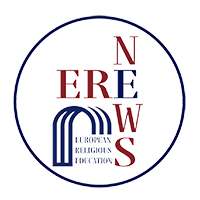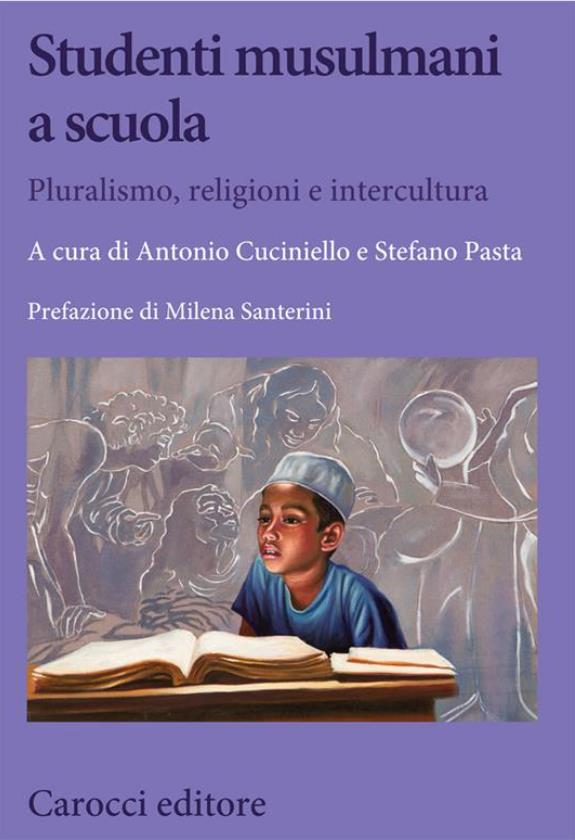By Isabella De Paolis
The book Studenti musulmani a scuola, edited by Antonio Cuciniello and Stefano Pasta, was published in November 2020, edited by Carocci and summarizes part of the work focused on intercultural skills and literacy in the Islamic world promoted by the PriMED-Prevention and interaction in the trans-Mediterranean area, in Lombardy. The text presents ten essays entrusted to the pen of scholars who, different for disciplinary skills and scientific interests, converge in attributing to the school and the educational agencies operating in public spaces, a key role in the formation of intercultural citizenship that can hinder, on the one hand, the manifestations of prejudices and stereotypes, and, on the other, counteract the emergence of radicalisation.
The introduction to the text, four-handed by the editors, helps the reader to identify who are the Muslims in Italy, providing numbers and data and outlining a brief, but clear, excursus on the ethnic specificities and the complex characteristics of the Muslim presence in Italy, so as to clearly define the ultimate goal of the text itself, that is to overcome the multiculturalism perspective in favor of the “critical intercultural pedagogy” approach (Santerini, 2017). Today the school context is a plural, complex and multifaceted reality where the relationships among teachers, educators, students and parental figures are intermingled. The book Studenti musulmani a scuola is concerned about the most relevant social and educational issues dealing with the Islamic religion that the school communities are coping with, suggesting new educational paths and interdisciplinary activities to be implemented and solutions to be evaluated.
Thanks to the contributions of scholars of church law, pedagogues, sociologists, anthropologists, Islamologists and Arabists, the reader (it may be an insider or whoever wants to be cultured about Islam) is accompanied on a journey that, in the first instance, deals with basic content on Islam and Muslims and, in the second place, referring to the school context, it also provides a comprehensive overview to whom, teachers, educators or assistants, are called to participate in the growth of students of different cultures and religious faiths from the Catholic and, therefore, to question the need to overcome the impasse of religious and cultural illiteracy.
In this regard, it is interesting, how this book faces the essential points relating to Islam tout court, as to untie the knots of semantic confusion around the terms “Islamic”, “Muslim” and “Arabic”, often misused as synonyms; to illustrate the guidelines that define the specificities of Islamic faith, worship and ethics; to define the epistemological panorama around the West versus East binomial; to mention analysis and theses, now historical, now sociological, now anthropological that have followed each other since the attack on the Twin Tower and to clarify the value of holidays and religious symbols with a look at legislation.
The ISMU Foundation estimates that, as of 1st January 2020, there are 5,923,000 foreigners in Italy out of a population of 59,641,488 residents, or just under one foreigner per 10 inhabitants and that 29% of foreigners resident in Italy are Muslim1.
Accordingly, it is clear the challenge to which the whole school community is called, which will have to commit to building a space where more cultures and more religions cannot only live together but enrich each other, starting from their main diversity. The words of Anna Granata, pedagogue and writer of a contribution to the text under examination, resound as appropriate, or “The school is another place, a space of self-recognition, but also the place where you can build your own identity, distinct from that of your family and your community”.
To accept this challenge means, essentially for teachers, to open themselves to a transversal educational and didactic action, to train themselves in order to acquire skills and abilities suitable to face cultural and religious otherness, to experience and collect new practices that can be reviewed and used in other contexts and in other situations under the common denominator that “intercultural education is not an exception, or an appendix that they must add to their educational and didactic action” [2].
It is a question of following up on the proposals made by the above-mentioned pedagogues and on what is stated in the White Paper on Intercultural Dialogue, which is mentioned in this text, and which focuses on the intercultural dimension of various subjects taught at school, as to underline the awareness of not relegating religious pluralism to the hour of IRC. Certainly the re-introduction of the teaching of civic education [3] has raised awareness of a more conscious intercultural pedagogical and educational approach, involving more cooperative participation among teachers, due also to ad hoc training courses proposed by the Ministry of Education through the Regional School Offices, in order to “answer students’ questions of meaning, combining school and life” (Granata, 2016).
In the lay panorama of the sphere of public schools, “the promotion of literacy to religions, then, looms at the cognitive level as a necessary tool to train students to a global citizenship” (Giorda, 2009). Proposals and suggestions are raised for possible didactic paths that move around the search for common values such as the Abrahamic origin of the three great monotheistic religions, the Mediterranean basin as the place of encounter-clashes of different cultures, the phonetic similarity of certain terms, the migratory phenomena and related socio-economic-demographic issues as well as historical, diachronic and synchronic analyses and comparisons, linked to struggles, wars and peaceful relationships that have taken place over the millennia.
Once the general scope of action of the issue has been defined, namely the above mentioned need for an intercultural approach of openness and dialogue at school aimed at enhancing diversity as a mutual enrichment, the text edited by Antonio Cuciniello and Stefano Pasta focuses attention on two critical issues closely related to the Muslim students: the presence of stereotypes and prejudices and the phenomenon of the radicalization of youth extremism; both refer in a speculative way to the so-called islamophobia.
Veiled girls and, sometimes, somatic traits; the days of public holidays (not yet recognized by the Italian State); religious symbols (the Catholic ones, exhibited in class); the fast of Ramadan; the issue around citizenship, are presented as evidence that emphasize a kind of “otherness” of those Muslim students who feel that they do not belong to the class group, despite many of them were born and raised in Italy but, at the same time, proudly of their Muslim faith. If all this can represent, for some, an introspective closure that affects self-esteem and, for others, the exhibition of a more ironic and disenchanted attitude that leads
1 XXVI ISMU Report on Migration 2020.
2 Marco Catarci, Massimiliano Fiorucci (edited by), Intercultural Orientations For Citizenship, Armando Editore. This volume is distributed free of charge as it is produced with the contribution of the EIF (European Fund for the Integration of Third Country Nationals)”Intercultural Guidelines for Citizenship”, Annual Programme 2012, Action 3 (“Youth Projects”), PROG. 103940.
3 Law 92 of 20 August 2019 introduced from the school year 2020-2021 the transversal teaching of civic education in the first and second cycle of education, with initiatives to raise awareness of responsible citizenship from kindergarten onwards.
To pretending nothing, it is clear that, in both cases, we are faced with attitudes that require the use of corrective actions and that need to be declined in well-studied training courses at an interdisciplinary level, with the aim of creating moments of formal and non-formal learning where students can open themselves to an inter- and intracultural dialogue in an area of freedom and confrontation. A freedom that, however, should not be misunderstood with that freedom of expression that, too banally and too hastily, makes fall into the trap of the speed 2.0 of the augmented-reality of the web and that, in the case of insults and hate speech against Muslims, gives rise to a real form of racism, or islamophobia. In this regard, the pages of Stefano Pasta review reflections and prevention proposals to islamophobia, starting from school benches, through educational paths that see a correspondence between the online and offline dimension and that literate students to digital competence, focusing on social responsibility and critical thinking.
Referring to islamophobia, we cannot fail to remember how the events of September 11th, 2001 have contributed to fueling ever more subtle and varied forms of hatred that have, in lots of cases, associated Islam with jihad and all Muslims with the armed terrorists of al-Qaeda. This distorted reading, which was followed by a media exposure supported by various testimonies, not least those of Oriana Fallaci and Cristiano Madgi Allam who have reinforced the presence of unfounded and dangerous stereotypes, has entered, in the school, with all the pitfalls and questions that accompany the turbulent novelties. This is the background to the phenomenon of youth radicalism that, although in Italy can be traced back to a few dozen children, teachers are called to recognize. What is defined the ‘Islamization of nihilism’ (Roy, 2017) seems to recruit two types of young people: the marginalized, socially and emotionally, from a disadvantaged background that do not accept their diversity and that suffer from the absence of future prospects and those who, despite coming from middle social classes, suffer the fascination of power and authority that wants to assert itself in the most repressive dimension. Hence, “the need for a patient work of inclusion, integration and intercultural dialogue” (Santerini, 2020). Several European educational projects are proposed in this book which, by analyzing propaganda from the extremist narrative, propose examples of peaceful counter-narration, based on the principles of democratic citizenship and aimed at arousing positive emotions. Beyond the school walls, planned educational outings are proposed within multidisciplinary programs and suggestions are made of meetings with the places of Islam, from mosques to prayer centers, to cultural associations that today they are opening up to institutional celebrations such as the sharing of iftār dinners (the end of fasting).
It is valuable the proposal of educational contributions; a case study on a research of the didactics of the history in the countries of the Persian Gulf that takes into consideration the study of the manuals used in public schools and the contents of the ministerial circulars concerning the teaching of the various disciplines and a compendium of teaching units as final outcome of the PriMED Advanced Training Courses, held in Lombardy. If, in the first case, the point of view of the methodological approach is interesting, in the historiographical field, which moves between the concepts of “discursive practice” and “discursive strategy”, it is however evident the difficult replicability or adaptability to cultural contexts like ours. As for the proposals for the teaching units, however, there are no references to the specific characteristics of the class group where the teaching actions were carried out, or information such as the number of students involved, their nationality, their religious faith, the presence of SEN or mixed-ability pupils and it would have been appreciable, as well as of considerable interest, the sharing of the results of the post-teaching interventions, through a feedback that highlighted the positive aspects and the critical issues and outlined any pros and cons in both the specific educational and social field.
The undoubted value of the text is to raise a very important current issue, that of the need to rethink the educational and guiding role of the school within a social context characterized by complex intercultural, intra-cultural and pluralistic dynamics. Islam, more than other religions, catalyses around itself strong emotions and mixed feelings that need explanation and recognition through a path of knowledge and overcoming prejudices that should start from a reshaping of school curricula that must be open to religious plurality in the name of preserving diversity. Because cultural diversity means wealth. And because being Italian does not coincide with being Catholic.
Schermo Intero



